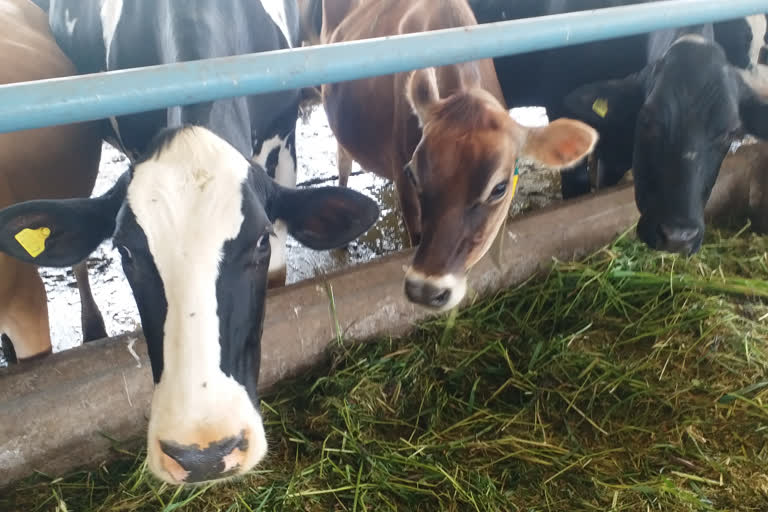Ludhiana: With stubble burning a major issue of concern in Punjab since a while now, a new discovery on its usage as fodder has emerged as a potentially effective solution. Researchers from the Guru Angad Dev Veterinary Animal Science University in Ludhiana have discovered that if the stubble is chemically treated with urea molasses, it can be used as nutritional fodder for the cattle without putting their lives at risk.
The discovered technique is called Urea Molasses Treatment of Paddy Straw which converts inedible paddy stubble into edible fodder after a chemical treatment involving mixing it with urea molasses. Dr. RS Garewal, a researcher at the Guru Angad Dev Veterinary University said, "If the stubble is directly fed to the cattle, it might affect their health adversely. On average, milch animals have the capacity of digesting stubble only up to 35 to 40%. But with the treatment that we have discovered, the stubble will become more adaptable to the cattle's digestive system, plunging their ability to digest it up to 45 to 50%."
Further shedding light on the usage of this mixture, Dr. RS Garewal, who is a veterinary specialist at the varsity, said that the number of constituents to be added while preparing the mixture has to be perfect and that the farmers should be especially careful about it in order to avoid harming their cattle. The technique, he said, has been tried and tested with positive results and therefore is ready to be introduced in the public domain.
"We have been exploring this technology for a long time. Once it was ready to be executed, we tried implementing it in a few dairy farms and it showed positive results. The milch animals can easily be given 2 kg of this fodder, while the cattle that no longer produce milk can be given 4-5 kg of the fodder. Although it is not suitable for cattle below the age of 4 months," he said, while clarifying that the technique might be a huge relief for the farmers as well as the state authorities trying to get the excess pollution caused due to stubble burning under control.
The paddy cultivated in the state of Punjab alone is spread across an area of around 29.68 lakh hectares, which generates a plethora of stubble every year. As a traditional technique of getting rid of the stubble, the farmers earlier used to put it to use as manure by plowing it in the field itself. However, to avoid efforts and with the availability of the new state-of-the-art machines, the farmers have now resorted to burning the stubble away instead, consequently leading to an alarming level of pollution.
Though the state government has been putting in perpetual efforts to eradicate the stubble-burning practice for a long time now, the recent statistics show no improvements in the situation whatsoever. Over the last 3 years, over 20,28,262 cases of stubble burning were reported in Punjab. With pollution being the chief issue caused due to the practice in and around the agriculturally active states, the recent pandemic made it even more severe a problem, posing life threats to the already vulnerable Covid-19 affected people. The discovery is therefore being looked at as a solution capable of solving several problems.
Also read: Sweeteners may be linked to increased cancer risk: Research



